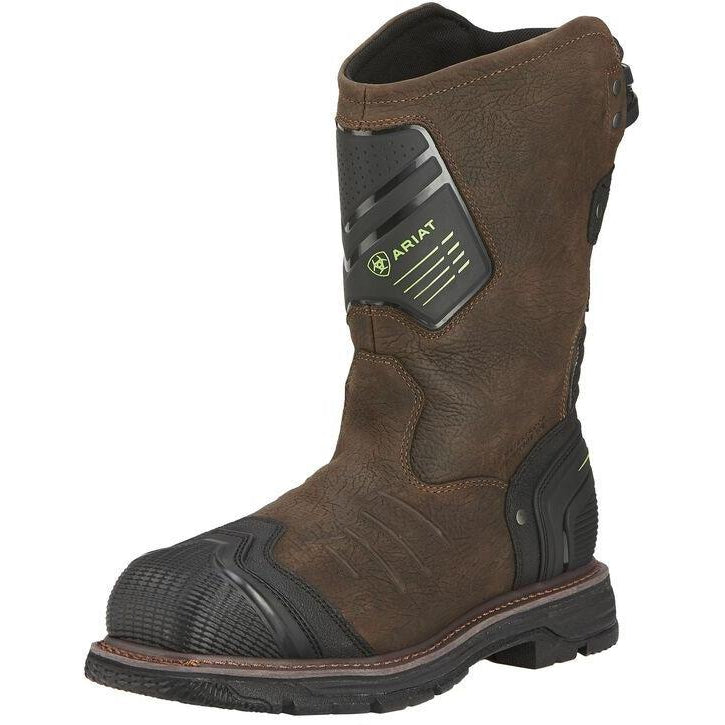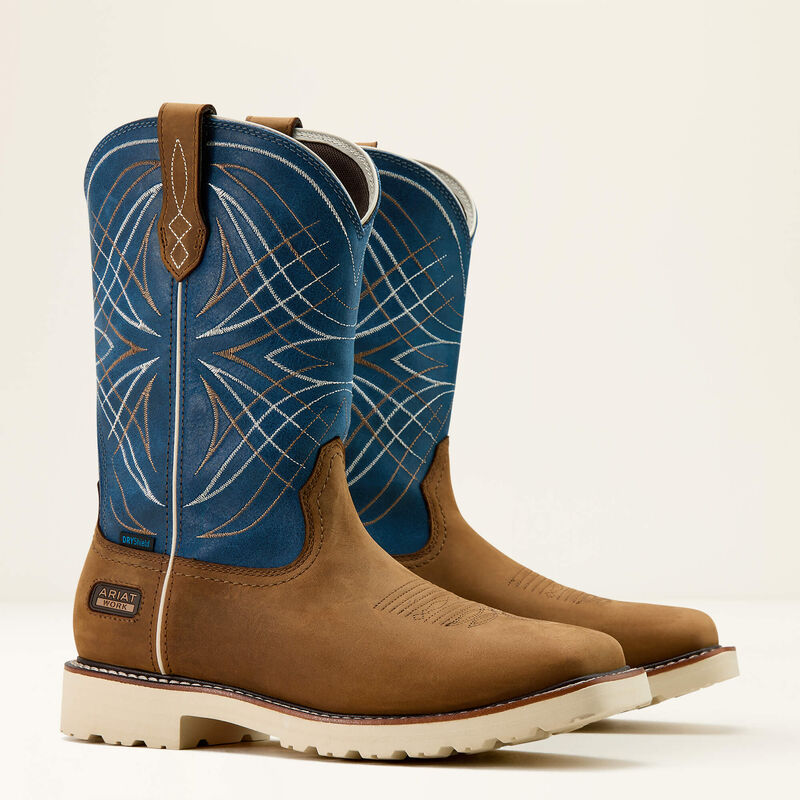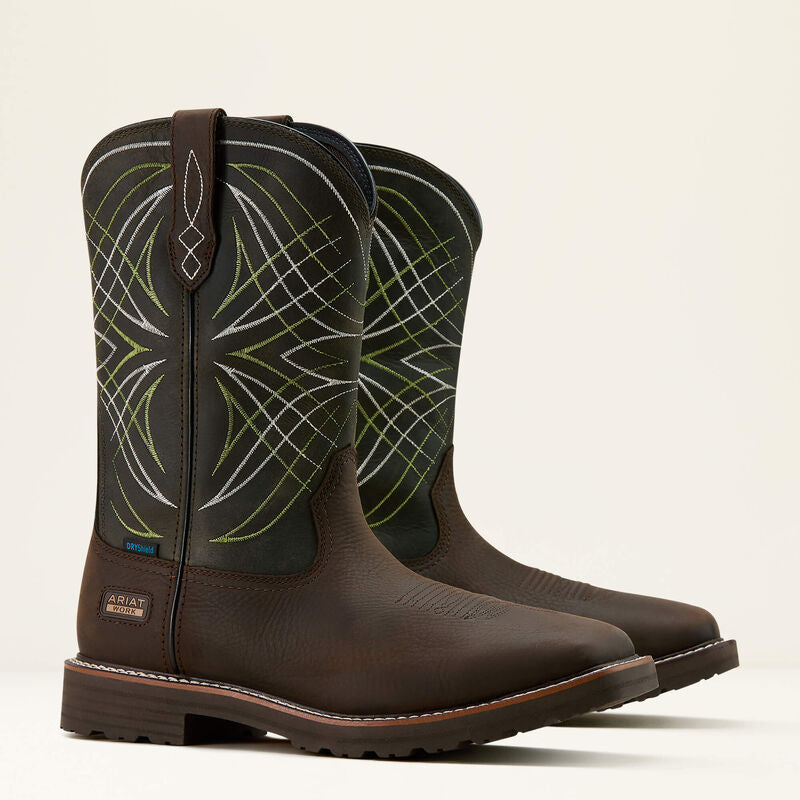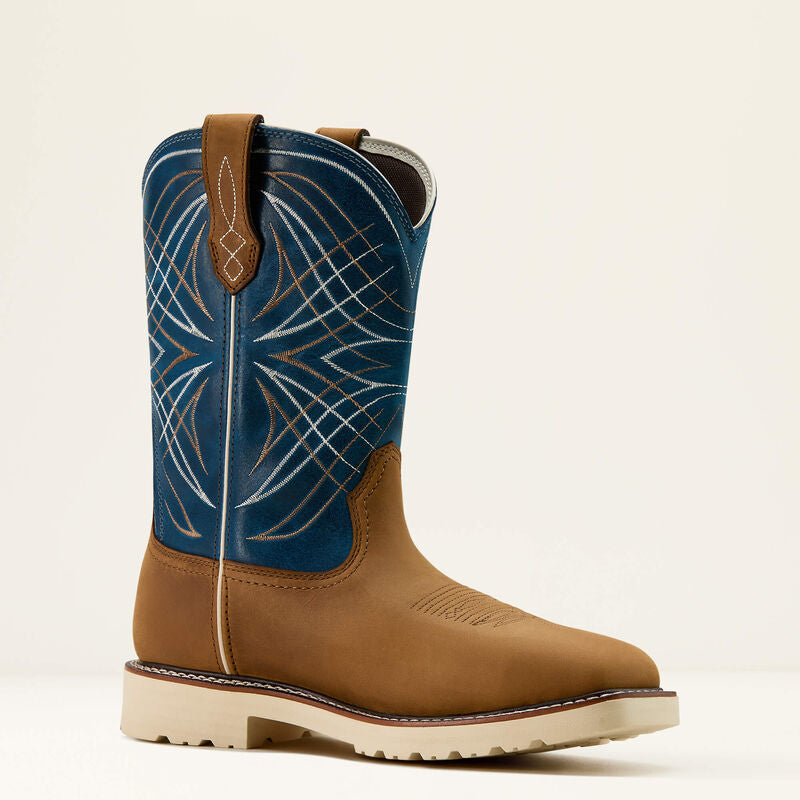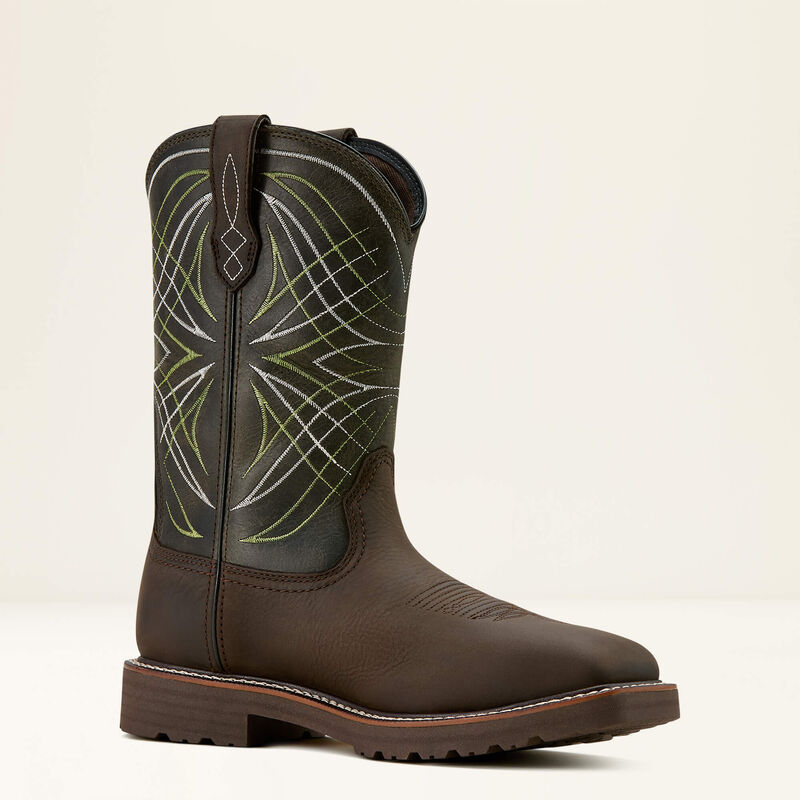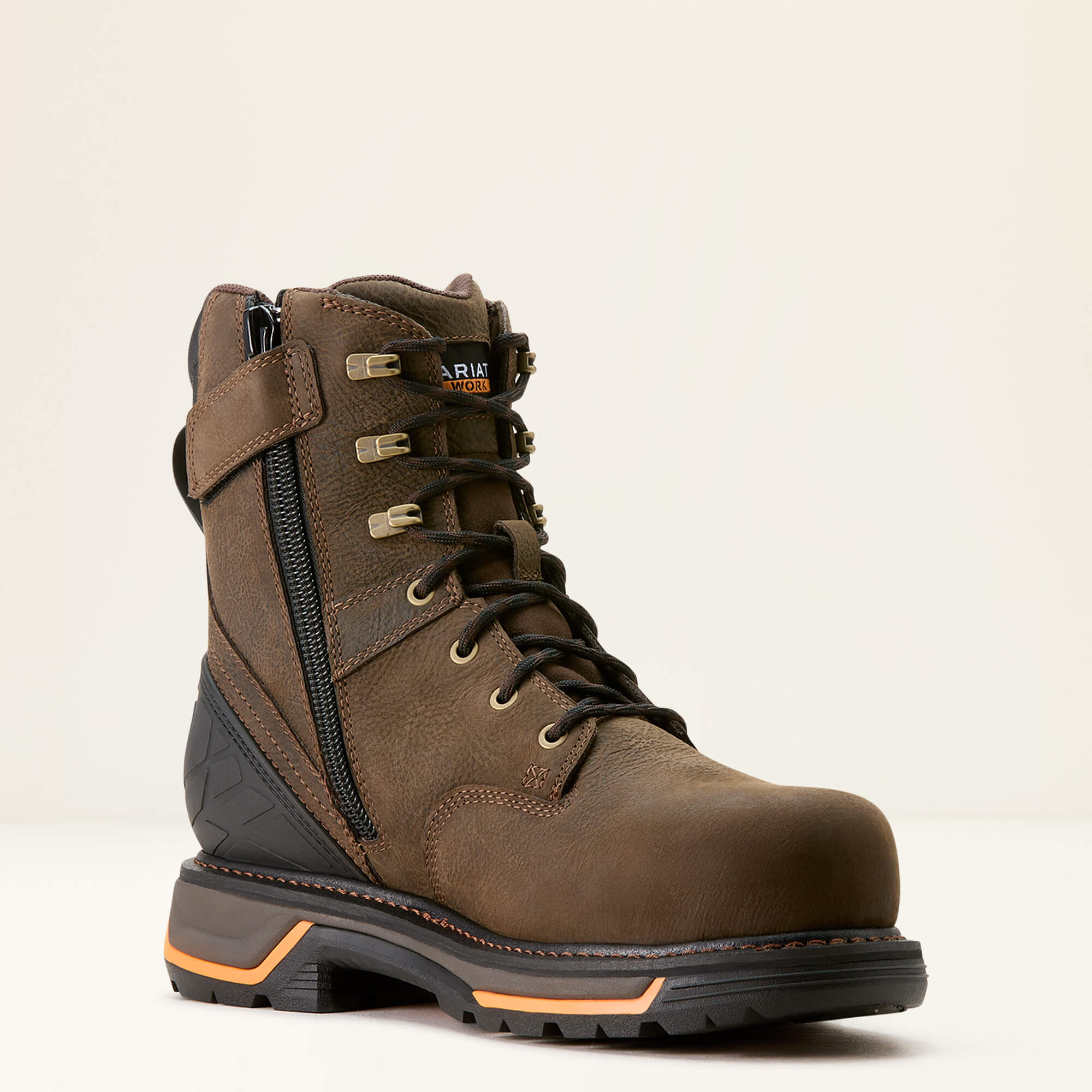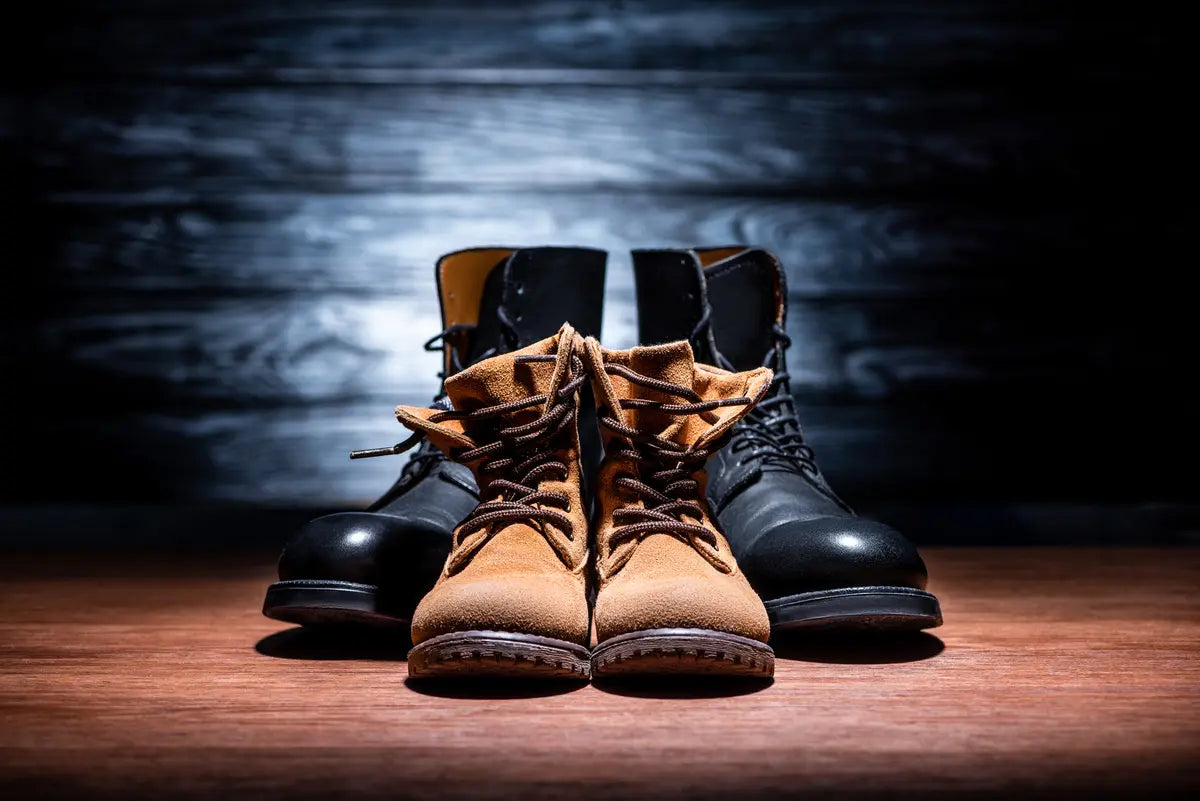If you're in the market for a new pair of men's work shoes or boots, you've probably come across the age-old debate of faux leather vs real leather. Should you go for the sustainable and affordable faux leather option or splurge on the timeless elegance of genuine leather types of footwear?
It's a tough choice, but fear not! We're here to guide you through this dilemma and help you make an informed decision. Whether you're considering men's leather work boots for durability and classic style or looking for a more budget-friendly alternative, this guide will break down everything you need to know.
This is your ultimate faux leather vs real leather guide to choosing the perfect pair! Let’s get right on it.
Faux Leather vs Real Leather: The Battle of Footwear Materials
A pair of leather shoes wears many faces. Regarding the types of leather, we have two main categories: genuine leather and artificial leather, each with its own set of advantages and drawbacks.
These distinctions go beyond aesthetics – they impact factors like comfort, durability, cost, and the environment. So, let's dive into the world of real leather shoes and synthetic leathers, examining the characteristics of each type of product that can make or break your next footwear choice.
Whether you're strolling through the city streets, hiking in the great outdoors, or looking for a reliable pair of work boots for men, this breakdown will help you make an informed decision.
[prc-collections-carousel]
The Modern Marvel: Pros & Cons Faux Leather Shoes & Boots

First up in the faux leather vs real leather footwear face-off is faux leather, the newcomer that has taken the market by storm. Wondering what material is faux leather shoes made of?
Made from synthetic materials such as polyurethane (PU) or polyvinyl chloride (PVC), fake leather shoes and the entire faux leather industry have come a long way since its humble beginnings.
Here's why fake leather footwear deserves a spot in your shoe or boot collection:
- Sustainability Superstar: Faux leather is a champion when it comes to sustainability. Synthetic shoes are made without harming any real animals, making them a great option for those who want to minimize their environmental impact. Plus, the manufacturing process of faux leather requires fewer resources than its real counterpart, making it a greener choice.
- Budget-Friendly: Let's face it, not all of us have a shoe budget that can rival Carrie Bradshaw's. Faux leather shoes and boots offer an affordable alternative without compromising on style. You can strut your stuff in trendy synthetic leather designs without breaking the bank.
- Easy Maintenance: Faux leather is a low-maintenance sweetheart. It's resistant to moisture and stains, making it a breeze to clean. A simple wipe-down with a damp cloth and your faux leather shoes will look as good as new. No need for expensive leather cleaners, special treatments, or fancy maintenance routines!
On the flip side... What are the disadvantages of faux leather?
- Durability: How long do faux leather boots last? Well, faux leather may not be as durable as real leather and can wear out more quickly, leading to a shorter lifespan for the footwear.
- Breathability: Faux leather is generally less breathable than real leather, potentially leading to discomfort, especially in hot weather.
- Limited Aging Aesthetics: Faux leather may not develop the desirable patina and character that real leather gains with time.
- Environmental Concerns: While often considered more sustainable than real leather, the production of faux leather can still have environmental impacts due to the synthetic materials used, such as polyurethane and PVC.
- Quality Variability: The quality of fake leather can vary widely, with some lower-quality options looking less convincing and feeling less comfortable.
But hold on a second – before you slip into faux leather shoes, let's take a closer look at the real deal - genuine leather.
Timeless Charm Meets Quality Craftsmanship: Pros & Cons of Real Leather Shoes & Boots
Ah, genuine leather products – the classic choice that has stood the test of time. Genuine leather is made from natural animal skin, using a tanning process that uses natural materials to create soft, beautiful hides (hence its distinct smell). There are several types of leather that you'll find in the market, such as full-grain leather, top-grain leather, and corrected-grain leather.
Full-grain leather is the most durable natural leather and is taken from the top layer of the animal hide. It's the strongest and most long-lasting. Top-grain leather is the second-best type of leather, taken from below the topmost layer of the hide. Corrected-grain leather is created by sanding the surface of the hide to remove any blemishes.
Here's why real leather footwear and quality leather products continue to captivate people around the world:
- Luxurious Longevity: Do leather shoes last longer than faux leather? In short, yes. Regarding durability, a genuine leather piece takes the trophy home. It's like that trusty pair of jeans you've had for years, only getting better with age. Real leather shoes and boots are built to last, providing you with a long-lasting investment in both style and quality, with proper care and maintainance.
- Unmatched Comfort: Picture this: slipping your feet into a pair of genuine leather shoes and feeling an instant embrace of comfort. That's what awaits you with real leather. The soft, supple nature of the material molds to your feet, ensuring a personalized fit that keeps you comfortable all day long. It's like walking on clouds!
- Timeless Elegance: Leather has a certain allure that faux leather just can't replicate. It exudes sophistication and a touch of luxury in natural colors, adding a dash of class to any outfit.
But it's not all rainbows and sunshine. Some downsides to original leather footwear include:
- Price: Real leather is often more expensive than faux leather, making it less accessible for budget-conscious consumers.
- Maintenance: Leather requires regular and proper care, including cleaning, conditioning, and polishing, to maintain quality and appearance.
- Sensitivity to Moisture: Leather can be damaged by excessive moisture, which may lead to stains, warping, or decreased longevity.
- Animal Welfare Concerns: Real leather is sourced from animal hides, raising ethical concerns for some consumers.
- Environmental Impact: The leather industry can have environmental consequences due to the resources and chemicals involved in tanning and processing.
Making the Call: Faux Leather vs Real Leather, Which One's for You?

Now that we've explored the strengths of both faux leather vs real leather, it's time to answer the ultimate question: which one should you choose? Well, the answer lies in your personal preferences, values, and priorities.
The real question you should be asking isn't, "Which is better, faux leather or genuine leather?" but rather, "What is the difference between faux leather and leather boots?"
Consider these factors before making your decision:
- Style vs. Sustainability: Are you more drawn to the latest fashion trends, or do you prioritize making ethical and environmentally friendly choices? Faux leather offers a wide range of stylish options, while real leather brings that touch of luxury and longevity.
- Budget vs. Investment: Willing to splurge on a pair of shoes that will last you for years, or looking for a budget-friendly option to switch up your style frequently? Real leather may cost more upfront, but its durability makes it a wise long-term investment. Faux leather, on the other hand, offers trendy options without draining your bank account.
- Maintenance and Care: How much time and effort are you willing to invest in maintaining your shoes? Faux leather requires minimal maintenance, while real leather needs a little more love and care to keep it looking its best.
Trending Faux Leather Alternatives to Consider
Psst! If you're on the lookout for eco-friendly options, there's a new star in town -100% animal-free, bonded leather is making waves, offering the look and feel of real leather shoes while staying true to cruelty-free, vegan leather principles.
[prc-collections-carousel]
Faux Leather vs Real Leather: Choose Your Shoes & Boots Wisely
Ultimately, the faux leather vs real leather debate comes down to finding the right balance between style, sustainability, intended use, and budget. Whether you choose real leather or fake leather footwear alternatives, remember that the most important thing is to feel safe and comfortable in your pair.
As the saying goes, "Give a girl (or guy) the right pair of shoes, and she (or he) can conquer the world", right? So, go ahead and do so, one step at a time, with the perfect pair of shoes on your feet, be it faux or real leather At Overlook Boots, we’ve got it all – browse our collections.
What's your preference? Are you team faux leather or team real leather?
FAQ
Got some more burning questions about faux leather vs real leather? Let's tackle the top FAQs, so you can make the right choice with confidence.
Does Faux Leather Look Like Real Leather?
Faux leather can mimic the appearance of real leather quite convincingly. Advancements in manufacturing techniques have made it challenging to tell the difference by sight alone. However, tactile qualities, like texture and flexibility, can help differentiate them.
How Can You Tell the Difference Between Real and Fake Leather Boots?
To distinguish faux leather vs real leather, you can:
- Check for pores, stretch marks or grain patterns on genuine leather.
- Examine the edges for a different color or texture, a common trait in faux leather.
- Smell it; genuine leather has a distinct, natural scent.
- Look for imperfections and variations in genuine leather, as it's a natural material.
Is 100% Leather the Same as Genuine Leather?
No, 100% leather is not the same as genuine leather. When a product is labeled as "100% leather," it typically indicates that the item is entirely made of leather, but it doesn't necessarily guarantee it's genuine leather. "Genuine leather" refers to a specific grade of leather, which can be part of a product labeled as "100% leather."
Are Real Leather Boots Worth It?
Real leather products are often worth the investment due to their durability, comfort, and timeless aesthetic. They tend to age gracefully and offer a level of quality and craftsmanship that faux leather may not match. However, the worth depends on individual preferences, intended use, and budget.
Can You Wash Faux Leather Boots?
Yes, you can wash faux leather boots, but the cleaning process varies based on the specific material and care instructions provided by the manufacturer. Generally, wiping them with a damp cloth or using mild soap and water is a safe method for cleaning. Always check the care label for guidance to avoid damaging the synthetic leather material.
